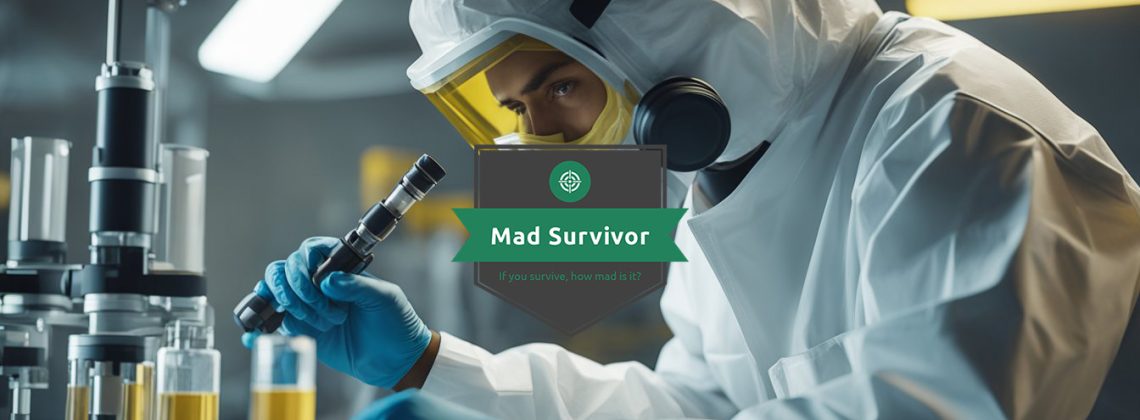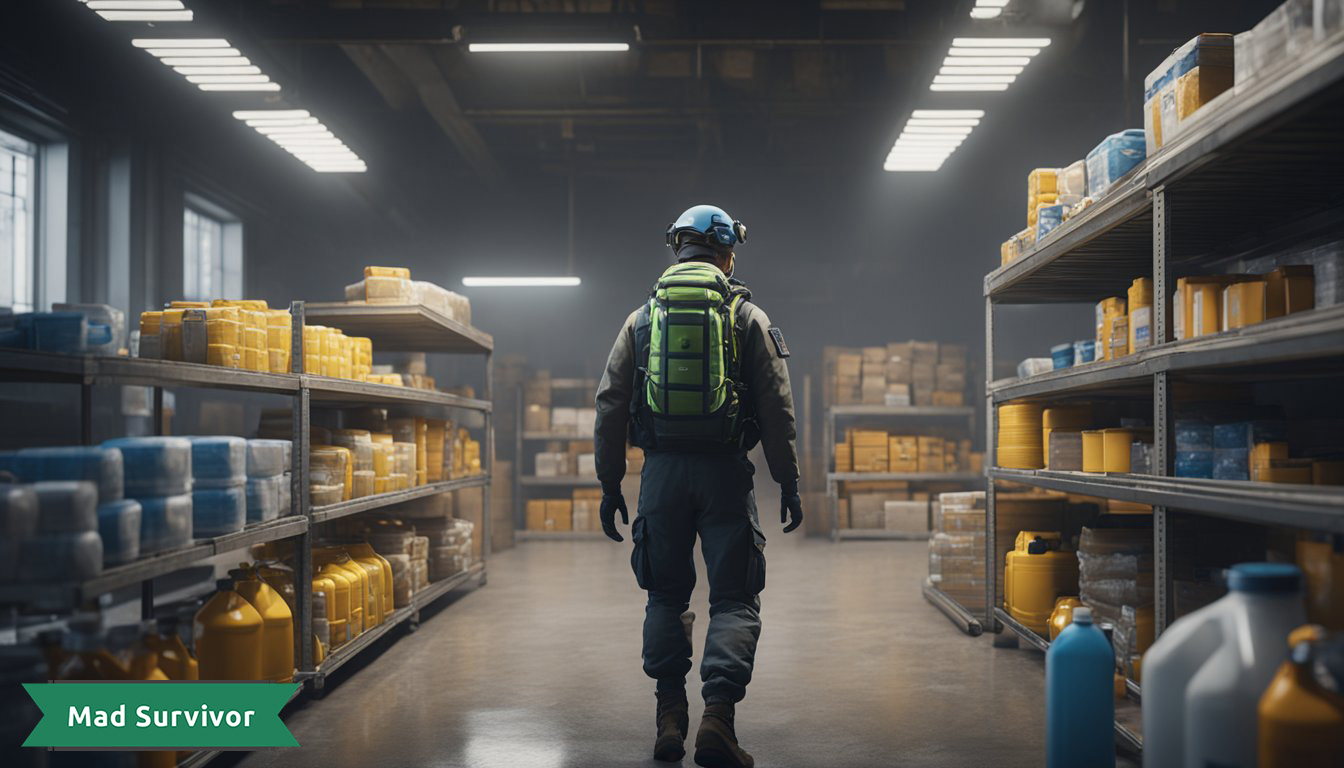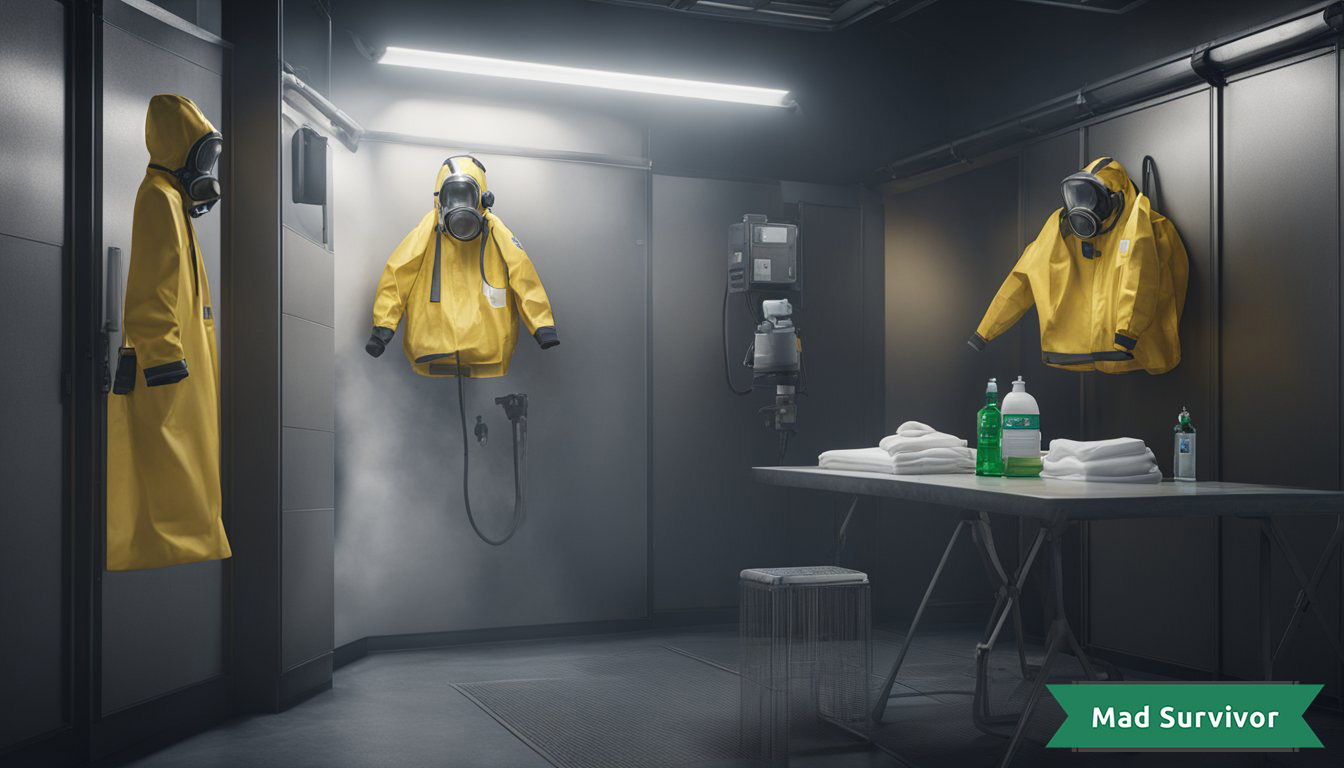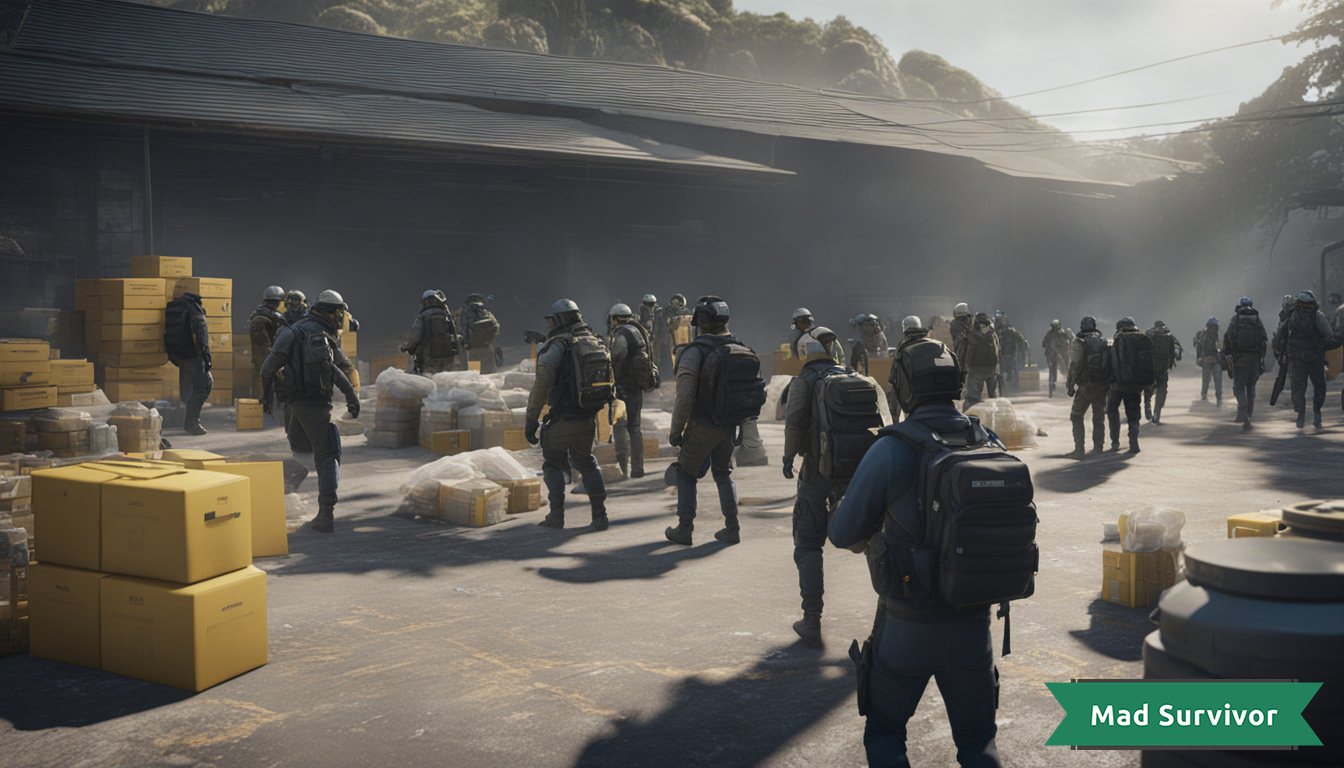
Understanding Biological Threats
To prep for a biological weapon attack, you must understand the threats posed by biological agents. This includes their historical use, the current risks, and the distinction between biological and chemical weapons. You should also know about international policies.
Jump To Section
- Understanding Biological Threats
- Personal Preparedness
- Home and Community Safety
- Detection and Reporting
- Medical and Governmental Response
- Education and Awareness
- Global Cooperation and Surveillance
- Conclusion
Types of Biological Agents
Biological agents are organisms or toxins that can harm humans, animals, or crops. They are classified into categories based on the severity of the disease they cause:
- Category A: These agents pose the highest risk to national security because they can spread easily and result in high mortality rates. Examples include Anthrax, Smallpox, Plague, Tularemia, and Botulinum toxin.
- Category B: These are moderately easy to disseminate and result in lower mortality rates. This category includes Glanders, Brucellosis, and Q fever.
- Category C: These are emerging pathogens that might be engineered for mass dissemination because of availability. Ebola and other hemorrhagic fevers are part of this group.
History of Biological Warfare
Biological warfare is not a new concept. One of the earliest recorded uses of biological agents was during the Middle Ages when plague-infected corpses were catapulted over enemy walls. More recently, during World War II, there were allegations of biological warfare involving the intentional spread of plague and other diseases.
Current Risks and Challenges
Today, bioterrorism represents a real and current threat. National security must now contend with the possibility of bioterrorist attacks and emerging infectious diseases. Examples such as the aerosol release of anthrax spores by terrorists in 2001 illustrate the ongoing risk.
Biological Weapons vs. Chemical Weapons
It’s important to distinguish biological weapons from chemical weapons:
- Biological weapons use pathogens or toxins to cause diseases.
- Chemical weapons use chemicals that can cause death or incapacitation through poisoning or asphyxiation, like in the Sarin gas attack on the Tokyo subway in 1995.
International Policies and Conventions
The Biological Weapons Convention (BWC), in force since 1975, aims to eliminate biological weapons. As of the last review, 180 countries are signatories to the convention. International cooperation is key to enforcing these policies and improving global security.
Personal Preparedness

To prepare for a biological weapon attack, focus on acquiring knowledge and resources that can be lifesaving. Each step you take in planning and preparation builds a stronger defense against bioterrorism threats.
Emergency Planning and Kits
Your emergency plan should include evacuation routes and a meeting point for your family. Emergency kits are essential; ensure yours contains at least:
- Water (1 gallon per person per day for at least three days)
- Food (a three-day supply of non-perishable items)
- Prescription medications and glasses
- First aid kit
- Battery-powered radio and extra batteries
- Whistle (to signal for help)
- Dust masks (to help filter contaminated air)
- Moist towelettes, garbage bags, and plastic ties (for personal sanitation)
- Wrench or pliers (to turn off utilities)
- Manual can opener
- Local maps
Vaccination and Preventive Measures
Vaccines can be a key defensive measure against specific biothreats. Stay informed about recommended vaccines and consider pre-exposure vaccination where available. Remember, basic hygiene practices such as frequent handwashing are also important in prevention.
Recognizing Symptoms and Seeking Treatment
Familiarize yourself with the symptoms of common biological threats. Early recognition can lead to timely treatment. If you suspect exposure, immediately contact emergency services or go to the nearest emergency department. Prompt administration of antibiotics or antivirals can be crucial to your health.
Decontamination Procedures
Learning proper decontamination procedures can prevent the spread of illness. In case of exposure:
- Remove contaminated clothing.
- Wash yourself thoroughly with soap and water.
- Seek professional decontamination services if available.
Psychological Resilience
The fear of bioterrorism can impact your mental health. Strengthen your psychological resilience by maintaining a support network and practicing stress-relief activities. In times of crisis, look for guidance from credible sources to avoid misinformation.
Remember, your preparation today acts as a shield for your health and safety tomorrow.
Home and Community Safety

Preparing for a biological weapon attack involves not just individual readiness but also ensuring the safety of your home and the well-being of your community. Below, you’ll find specific steps to enhance security, establish a support network, and maintain a safe and sanitized living space.
Building a Support Network
Establishing a solid support network within your community is crucial. Get to know your neighbors and local emergency response teams. Exchange contact information and discuss action plans. Set up community-wide communication systems such as phone trees or social media groups.
Secure and Sanitize Living Spaces
Regular decontamination of your living space is paramount.
- Cleaning: Utilize disinfectants on high-touch surfaces daily (e.g., doorknobs, light switches).
- Security: Install high-efficiency particulate air (HEPA) filters to minimize airborne particulates.
Food and Water Security
Secure a reliable supply of food and water.
- Food supply: Stockpile non-perishable food items, ensuring a balanced diet.
- Water: Store at least one gallon of water per person per day for at least three days.
Animal Safety Measures
Your animals’ safety is also vital in case of a biological attack.
- Livestock: Set protocols for frequent surveillance and protection against contamination.
- Pets: Keep a reserve of pet food and include your pets in your family emergency plan.
Detection and Reporting

In the event of a biological weapon attack, the ability to promptly detect and report incidents is important for an effective response. Using advanced surveillance systems and recognizing early warning signs can save lives, and communicating effectively with health authorities ensures a timely defense against emerging infectious diseases.
Surveillance Systems and Technologies
If available, your first line of defense against a bioterrorism event is a robust surveillance system. These systems monitor for potential threats and track the spread of diseases.
- Technologies: Utilize biosurveillance technologies like the BioWatch Program, which provide early detection of biological threats across multiple locations.
- Diagnostic Tests: Keep informed about the availability of diagnostics that can detect pathogens rapidly and accurately.
Understanding Early Warning Signs
Recognition of symptoms related to bioterrorism agents is essential for early detection.
- Symptom Recognition: Familiarize yourself with the common signs indicative of exposure to biological agents.
- Preparedness Training: Engage in training programs, such as those led by the Centers for Disease Control (CDC), to enhance symptom awareness and preparedness.
Communication With Health Authorities
Effective communication with public health authorities can accelerate the preventative measures and response to biological threats.
- Risk Communication: Develop clear channels to receive and convey information about potential bioterrorism attacks.
- Reporting Protocols: Ensure you know your local reporting protocols to the CDC or other relevant health authorities in case of suspicious symptoms or events.
Medical and Governmental Response

Your safety and well-being during a biological weapon attack depend significantly on the preparedness and response of medical and governmental bodies. They work in tandem to manage emergencies through a combination of healthcare system readiness, public health agency involvement, research advancements, and security enforcement.
Healthcare System Preparedness
Hospitals and emergency departments play a pivotal role in response to bioterrorism. They prepare by increasing surge capacity to handle an influx of patients and by training personnel in the identification and management of biothreats. Standard operating procedures for quarantining affected individuals and decontamination protocols are crucial. The Centers for Disease Control (CDC) provides guidance to ensure that these medical facilities have the necessary medical countermeasures such as vaccines and treatments.
- Key features for Hospital Preparedness:
- Enhanced surge capacity and infrastructure
- Staff training for bioterrorism response
- Stockpiling necessary medical countermeasures
Roles of Public Health Agencies
Public health agencies at the federal, state, and local levels coordinate the emergency response to biological attacks. The CDC, for example, spearheads efforts in disease surveillance and epidemiology. Emergency management offices are involved in developing and executing plans that address the massive coordination needed between different healthcare providers and government agencies during an emergency.
- Functions of Public Health Agencies:
- Disease tracking and information dissemination
- Coordinating interagency emergency response plans
Research and Development in Biodefense
Ongoing research and development in biodefense is critical. Laboratories and biotechnology firms, often backed by government funding, focus on developing new technologies and improving vaccine research. The goal is to stay ahead of emerging threats by fast-tracking the creation and approval of potent medical countermeasures.
- Research Priorities:
- Accelerating vaccine and therapeutic research
- Developing rapid diagnostic tools and techniques
Law Enforcement and Security Measures
Law enforcement and defense agencies work on the preventive side of bioterrorism. They oversee security operations, conduct inspections, and maintain vigilance against potential threats. Their role extends to investigating threats, enforcing regulations related to dangerous pathogens, and securing sensitive sites against unauthorized access.
- Security Strategies:
- Enhanced inspections and surveillance techniques
- Coordination with defense agencies for threat assessment
Your understanding of these key areas helps you appreciate the complexity and importance of a coordinated response to biological threats.
Education and Awareness

It’s important to realize that knowledge is your first line of defense. Education and ongoing awareness efforts are vital to ensure that you, your family, and your community are equipped to respond effectively.
Community Training and Drills
Your community plays a pivotal role in biological attack preparedness. Engage with local public health officials to periodically:
- Organize bioterrorism response training for emergency responders.
- Conduct emergency drills that simulate a biological weapon incident to test community readiness.
- Facilitate workshops that cover the identification and reporting of potential attacks.
Public Information Campaigns
Stay informed through public information campaigns created to spread awareness about the threats and the response to a biological attack:
- Watch for educational materials and alerts from health departments.
- Follow reliable sources on social media for updates and informational content.
- Participate in community forums where experts provide insights on preventative measures.
School and Workplace Programs
Safety at schools and workplaces is non-negotiable during a bioterrorism threat. Make use of programs designed to ensure a safe environment:
- Join school safety initiatives prioritizing emergency protocols related to biological threats.
- Encourage your workplace to adopt bioterrorism response plans that include employee training.
- Support ongoing drills and exercises that improve the institutional preparedness level.
Through these practical steps in education and awareness, you’ll not only increase your knowledge but also contribute to a better-prepared and resilient community.
Global Cooperation and Surveillance

In preparing for and preventing the dire consequences of a biological weapon attack, your safety is intertwined with robust global cooperation and advanced surveillance capabilities. Here, we explore the necessity of international partnerships, data sharing for epidemic intelligence, and collaborative research initiatives that contribute to a secure and responsive global health defense system.
International Partnerships
To enhance security against bioterrorism threats, countries engage in strategic partnerships. These alliances like the Global Health Security Agenda (GHSA) enable you to benefit from collaborative efforts in detecting and responding to public health emergencies. Policy frameworks fostered by the World Health Organization (WHO) guide these partnerships, ensuring that your health is safeguarded by international support.
Data Sharing and Epidemic Intelligence
Epidemic preparedness relies on transparent and swift data exchange between nations. Global surveillance systems such as the WHO’s Global Outbreak Alert and Response Network (GOARN) facilitate real-time information sharing and epidemic intelligence. This proactive approach to data sharing is pivotal in early detection and containment of biological threats, keeping you informed and prepared.
Collaborative Research Initiatives
Joint research initiatives are your backbone in the fight against bioterrorism. Collaborative efforts, like the European Union’s Horizon 2020 program, support the development of innovative countermeasures and medical supplies. This collaboration leads to breakthroughs in diagnostics, vaccines, and therapeutics, which are essential for your protection in the event of an attack.
Conclusion

Your best strategy against the impact of a biological weapon attack is preparedness. Let’s look at a summary of key points, what the future holds, and the importance of continued commitment to being prepared:
- Educate yourself on potential biological hazards and their symptoms.
- Develop an emergency plan that includes evacuation routes, sheltering instructions, and communication strategies.
- Maintain a stockpile of essential supplies: non-perishable food, water, medications, and protective gear.
Future Outlook
Defense strategies against bioterrorism are evolving. Advances in technology and medicine will continue to improve detection and response capabilities. Your awareness and adaptability are important as methods to counter these threats advance.
Commitment to Preparedness
Consistent updates to your emergency plan, ongoing education, and a proactive stance are vital. Participate in community preparedness initiatives and support policies that strengthen biodefense infrastructure.
- Stay Informed: Regularly consult credible sources for the latest in bioprotection.
- Practice Drills: Engage in simulations to reinforce your response to a biological event.
- Engage with Community Leaders: Build a support network that fosters resilience in the face of biological threats.
In preparing for the unforeseen, your action today is your safety tomorrow.

Leave a Reply